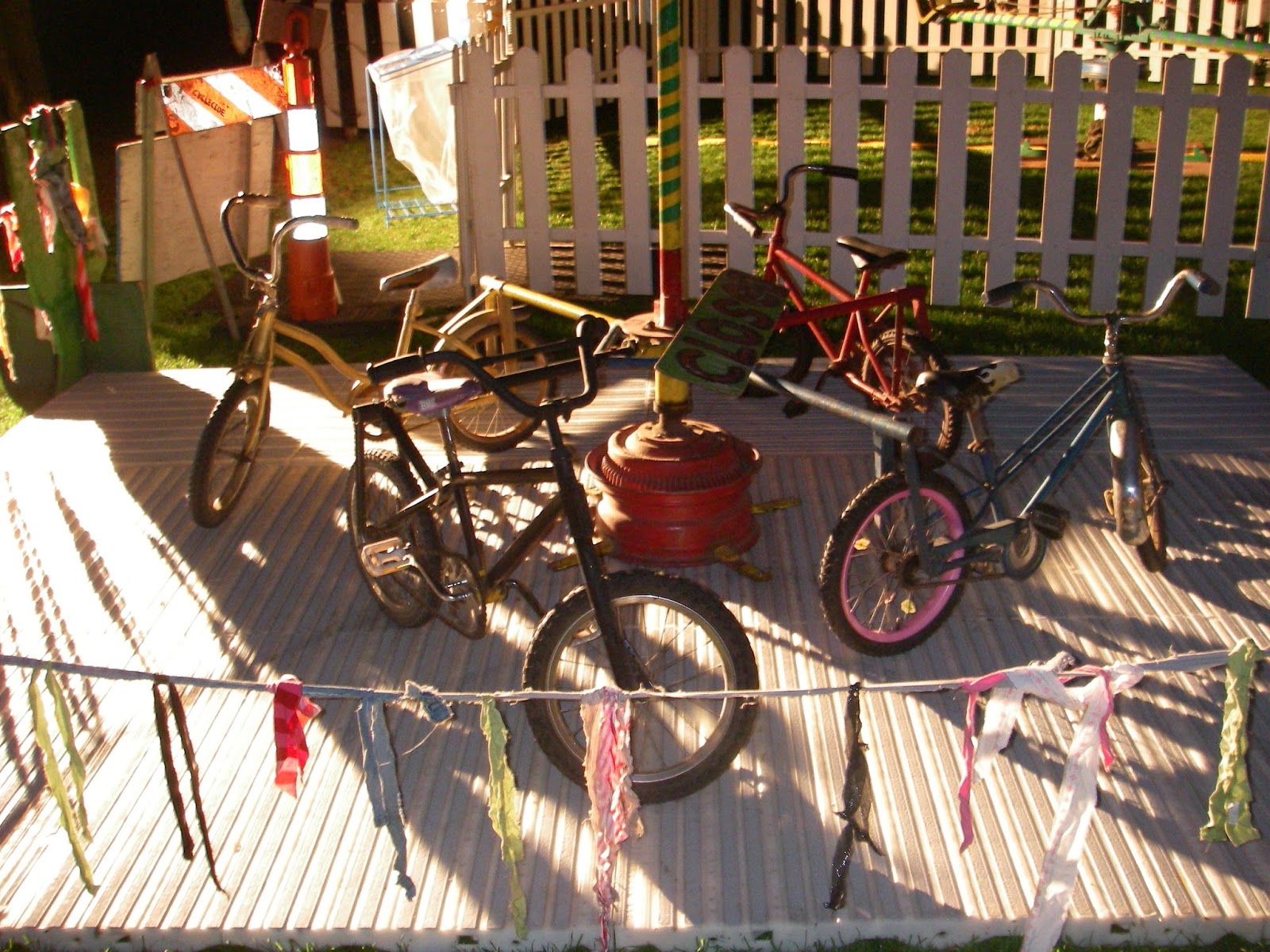Art and Future Scenarios
I have added this post at the risk of undermining the previous post about Future Scenarios. This was the elephant in my mind when I read Future Scenarios- How Communities Can Adapt to Peak Oil and Climate Change by David Holmgren. Does it help or hinder our actions to present/future challenges, by comparing them to distopian art? Especially since climate change and peak oil are still described in terms of 'belief'.... meaning subject to individual subjective opinions, not something that requires a global human response.
Or does art give people the impetus to take action, because they can see, feel, hear and touch an idea better than hearing clinical factoids about meters of shrinking ice, or number of barrels per day?
Or does art give people the impetus to take action, because they can see, feel, hear and touch an idea better than hearing clinical factoids about meters of shrinking ice, or number of barrels per day?
I think it might do a bit of both. Art is generally thought to be a reflection, a criticism, a exposé of our times. If we look back at 20th century literature we find examples of fiction reflecting events and ideas of the time. For example:
- A Brave New World by Aldous Huxley, published in 1932, is a response to the industrial revolution, the First World War and the 'Americanization' of Europe.
- 1984 by George Orwell, published in 1949, was inspired by the rise of Communism and war time measures in Britain. The book explores themes of nationalism, censorship, the cult of personality, surveillance.
- Fahrenheit 451 by Ray Bradbury, published in 1953, was influenced by World War Two censorship and war time measures.
- Do Androids Dream of Electric Sheep? by Phillip K. Dick, published in 1968, was written perhaps as a response to the cold war and nuclear arms, the environmental movement, technological advancements in computers and space technology.
- and more....
Is it not logical that in the 2000s that we have books such as:
- Oryx and Crake by Margaret Atwood, published in 2003. Oryx and Crake is speculative work of fiction commenting on the power of corporations, segregation of economic classes, power of pharmaceutical companies, genetically modified organisms, epidemics, sexual slavery, media power and media escapism.
- The Year of the Flood by Margaret Atwood, published in 2009, is another work, along the same vein of Oryx and Crake, commenting on gang violence, back to the landers of religious denominations and cults, the danger of genetic modification and the idea of collapse.
Do we create an abundance of distopian stories because we are like Dicken's Scrooge, we rely on horror, despair and fear to fuel our transformations to a lighter, more compassionate, more equitable world?
 |
| Northern bluebells- (Mertensia paniculata) |
And then there is the art which could be labelled as climate change art or eco-fiction. Maybe distopian, maybe not... maybe just a call to action, to awareness. In a recent RadioLab and Q2 podcast about the the contemporary composer John Luther Adams, the composer talks about what inspires him to create art. John Luther Adams says his music is often inspired by nature, specifically from the vast landscapes of Alaska, where he lives. One of his most recent pieces of music, Become Ocean, (which won the 2014 Pulitzer Prize for Music) was inspired from sitting beside the Pacific Ocean, listening to the waves crash on the shore. John Luther Adams says the following about Become Ocean:
"Life on this earth first emerged from the sea. And as the polar ice melts and sea levels rise, we humans find ourselves facing the prospect that, once again, we may quite literally, become ocean."- John Luther Adams
 |
| Art bike performance, San Francisco, 2007 |
However, at around minute twenty-four in the Radiolab podcast John Luther Adams also says the following about Become Ocean:
"This is a global warming piece, and I would say, everything that I do these days, is in some way addressing the state of the world, and the delicate and precarious position of we human animals in the world. And yet I will also, out of the other side of my mouth, insist that it has absolutely nothing to do with current events or politics or activism and that music must stand on its own as music. And I'd like to believe we can have it both ways."
 |
| b:c:clettes perform in San Francisco in 2007 on the Velo:city Tour |
I would also like to to put it out there that we also need art about a hopeful future. What if the future, could actually be better than it is today, without all the trappings and dysfunctional behaviour our affluent lifestyle? This is something that Rob Hopkins emphasizes in Transition Initiatives. Transition Tales aims to create media, and art about the future we want to achieve, because we can't get there if we don't know where we are going. Check out In Transition 2.0 for some inspiring real life stories of change and community building.
 |
| Cyclecide merry-go-round, Seattle 2007 |
For an eccentric and inspiring video about creating the life you want to live, check out the classic Winking Circle.
Got any inspiring art to share?



Comments
Post a Comment